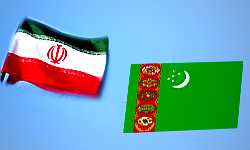
Baku, Azerbaijan, Nov. 10
By Azer Ahmadbayli Trend:
Last Sunday new comments regarding almost one-year-old Iran-Turkmenistan gas dispute have appeared. Managing Director of National Iranian Gas Company (NIGC) Hamidreza Araqi told ISNA that negotiations were underway and expressed hope to conclude the dispute through a dialog.
Why have the comments been made just on the threshold of winter and which side of the dispute is more interested in finding a prompt and peaceful solution?
Iran has produced a great amount of natural gas, raising its output continuously from year to year within more than a decade, but several factors prevent it from completely solving a serious problem concerning provision of its north-eastern regions with gas in cold seasons.
Iran’s rapidly growing domestic gas consumption is almost equal to the production level. In 2016, Iran produced 202.4 bcm of natural gas (a growth rate of 6.6 percent), while consumption was 200.8 bcm with growth rate being 5 percent (data from BP).
In addition, Iran has to perform its international obligations. The Islamic Republic has had a long-term gas export agreement with Turkey. In 2016 it exported about 8 bcm of gas to the neighboring country, according to the latest BP Statistical Review.
In June, Iraq became a new destination for Iran’s gas export. Exports started at approximately 2.5 bcm per year and would eventually reach 12.8 bcm, according to Iranian officials.
Iran itself presents data even exceeding those of BP. Iranian Oil Minister Bijan Namdar Zanganeh said last week that Iran currently sells nearly 15 bcm of gas annually, more than 90% of which go to Turkey and Iraq.
He also indicated that 98% of the urban population and over 70% of people in small towns and villages in Iran are connected to the national gas grid, according to Iran’s Financial Tribune.
Iran used to deliver designated amount of its own gas to Turkey at its western borders in exchange of importing the Turkmen gas from its eastern borders for provision of households in the north-eastern regions in cold seasons.
On January 1, 2017, at the height of cold weather, Ashgabat halted gas supply putting Iran into predicament.
At once the sides began to hurl reciprocal accusations at each other.
Turkmenistan’s Foreign Ministry said that starting from 2013 Iran's national gas company had not shown appropriate efforts to pay off the debts for Turkmen gas which has been previously supplied to the Islamic Republic.
Turkmenistan claims Iran has to pay $1.8 billion due payment for gas it received in 2007-2008. At that period of time, Turkmenistan reportedly increased the gas price for Iran from $40 to $360 per 1,000 cubic meters, despite a 20-year deal.
During the year 2016, the Iranian side was officially informed about possible limitation in supply of gas, the Foreign Ministry said.
"The lack of positive reaction from NIGC to the constructive initiatives of Turkmenistan and inactivity in the search of mutually acceptable alternatives resulted in forced limitation of Turkmen gas supplies to Iran as of January 1, 2017."
Iran, in its turn, repeatedly threatened Ashgabat with taking the matter to international arbitration court due to violation of terms of the contract, including unauthorized change in gas price and unilateral cut of gas supply despite the other side has unpaid debt.
Although Tehran talks a lot about taking the matter to international arbitration, it actually avoids following a hard line in the dispute, preferring to sort it out in tête-à-tête negotiations.
Iran’s gas consumption in winter usually triples as compared with warm seasons. Iran can’t help taking account of needs of about 15 million people living in the north-east, where temperature falls sometimes to 14-16 degrees below zero.
By launching on August 1 the 170-km Damghan-Sari pipeline with the capacity of 40 mcm/d, transporting gas to six north-eastern regions, Iran managed to partially ease the problem. However, Iran’s gas production capacity in those regions stands at about 14 bcm/y, which is still less than the demand.
As it was said above, in early 2017 gas export to Iran from Turkmenistan was completely stopped.Since early 2016 Russia cancelled gas import agreement with Ashgabat and is no more the buyer of Turkmen gas in near future.
Currently, China is the only buyer of the Turkmen gas.Ashgabat realizes the potential risks of having a single gas customer.Undoubtedly, it would welcome new ones.
In addition, the Turkmen economy is facing serious difficulties.
In June, President of Turkmenistan Gurbanguly Berdimuhamedov ordered the Government to look into the issue of withdrawal of all social preferences for the population who have been benefiting from them for about 25 years. From November 1, 2017 new tariffs have been introduced for gas, electricity, road transportation and communications services.
The conclusion is that for the time being, Iran will hardly progress in full provision of the north-eastern regions simultaneously with its international export obligations without the Turkmen gas import.
On the other hand, for the Turkmen economy, which is going through hardships, it will be a good and in-time financial injection to make profit from exporting some 5 bcm or more of gas to Iran.
Therefore, the sides have to come to an agreement. Common sense suggests that.
